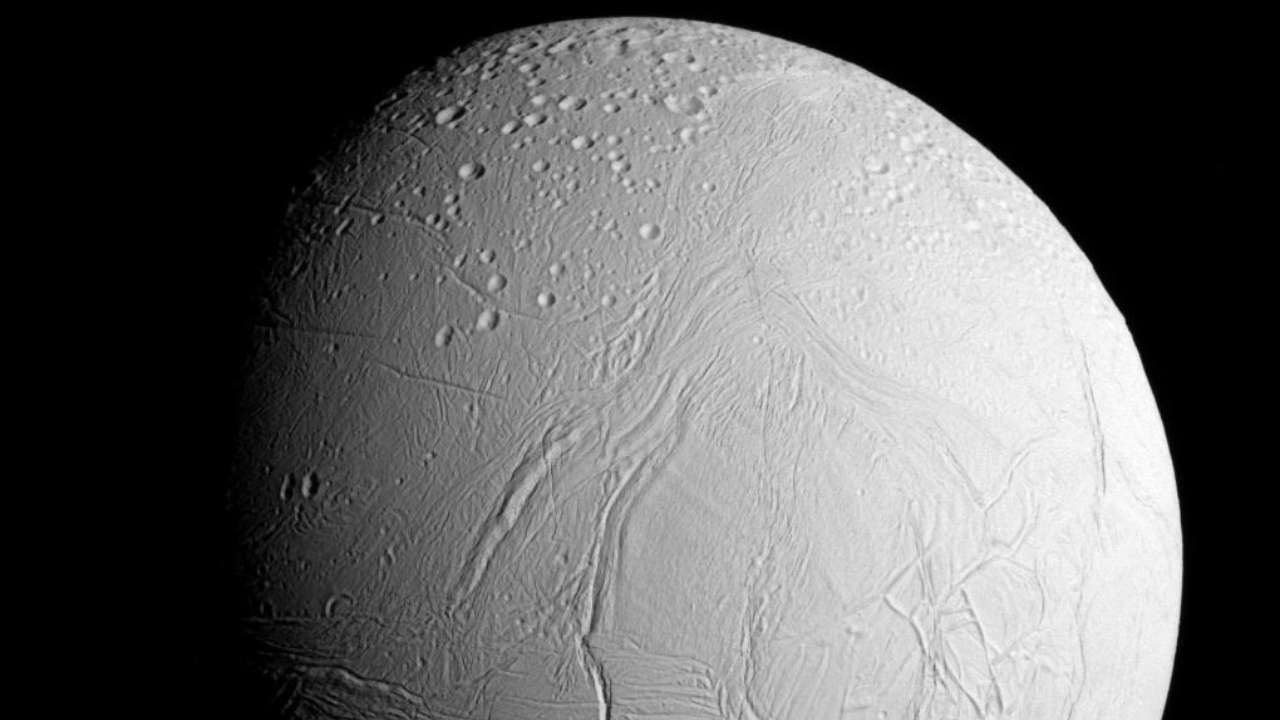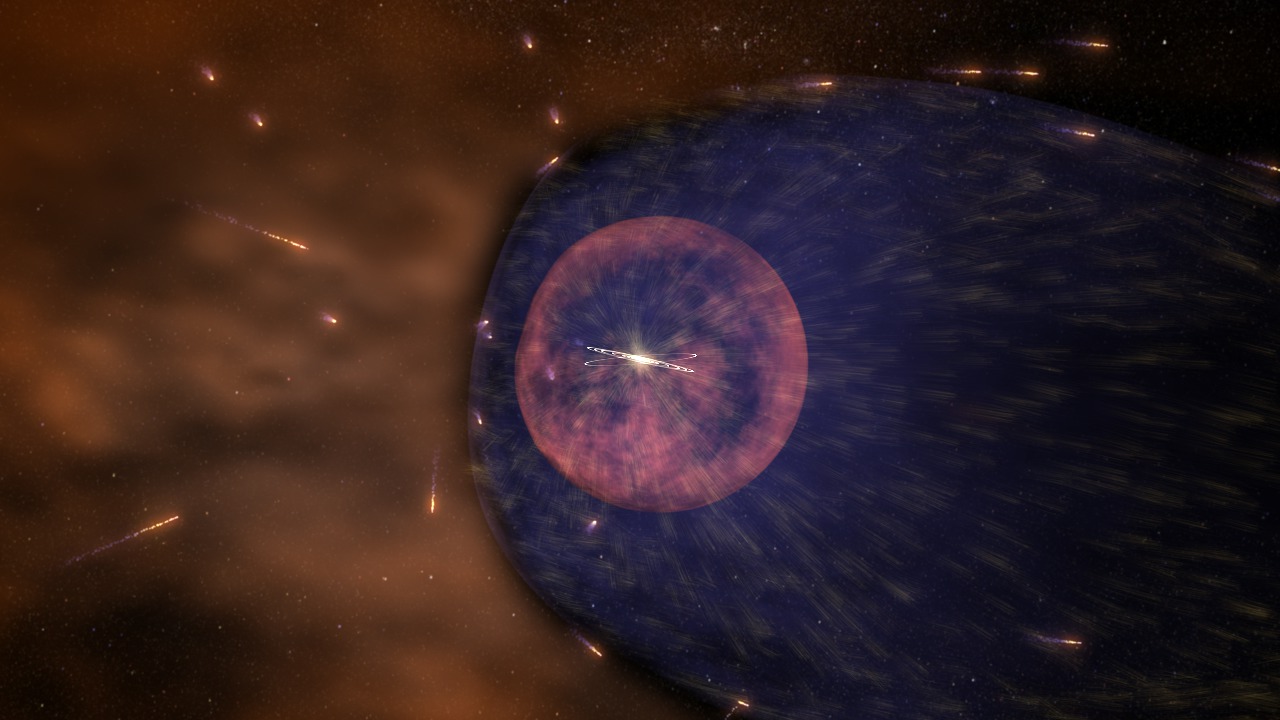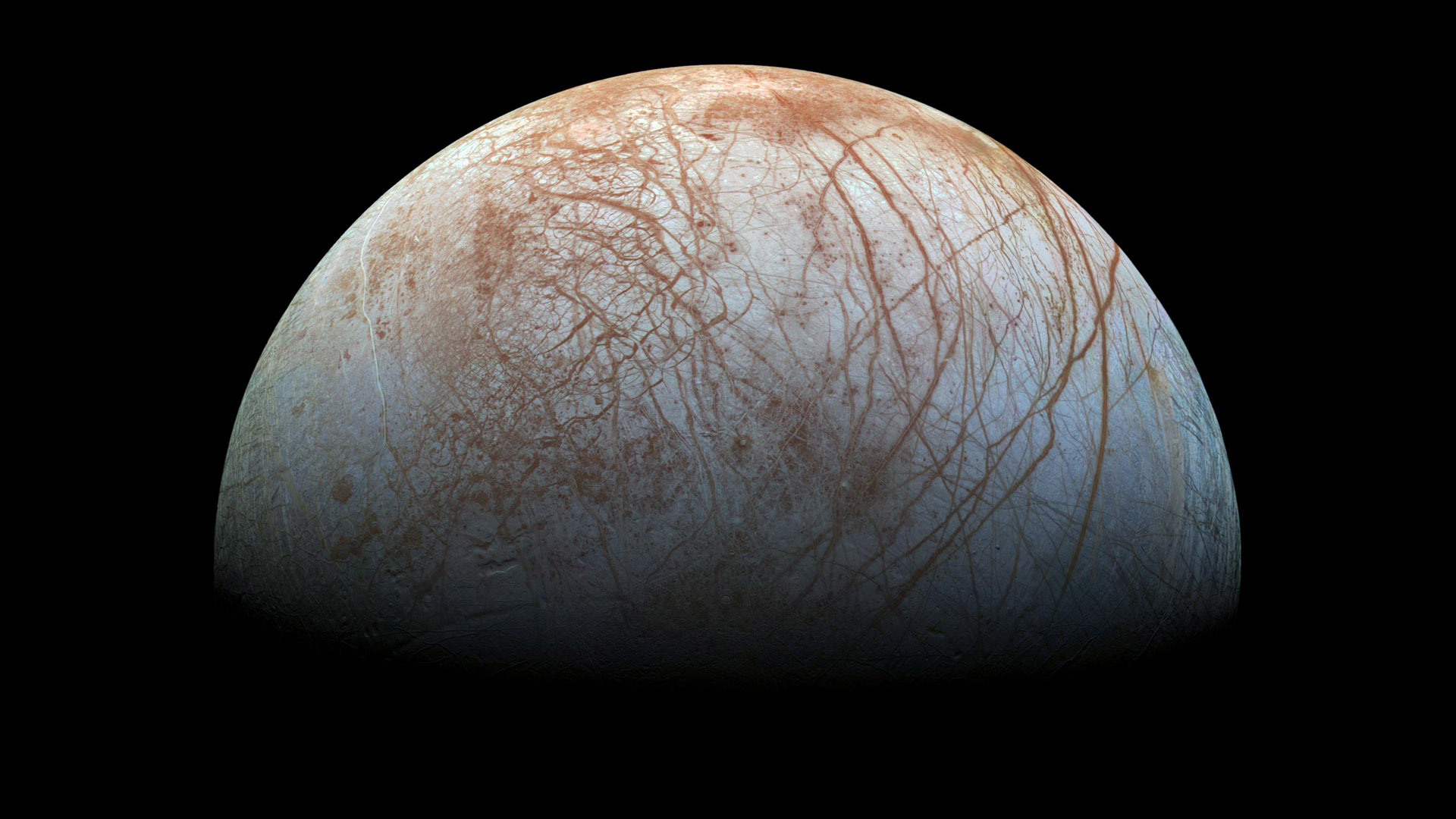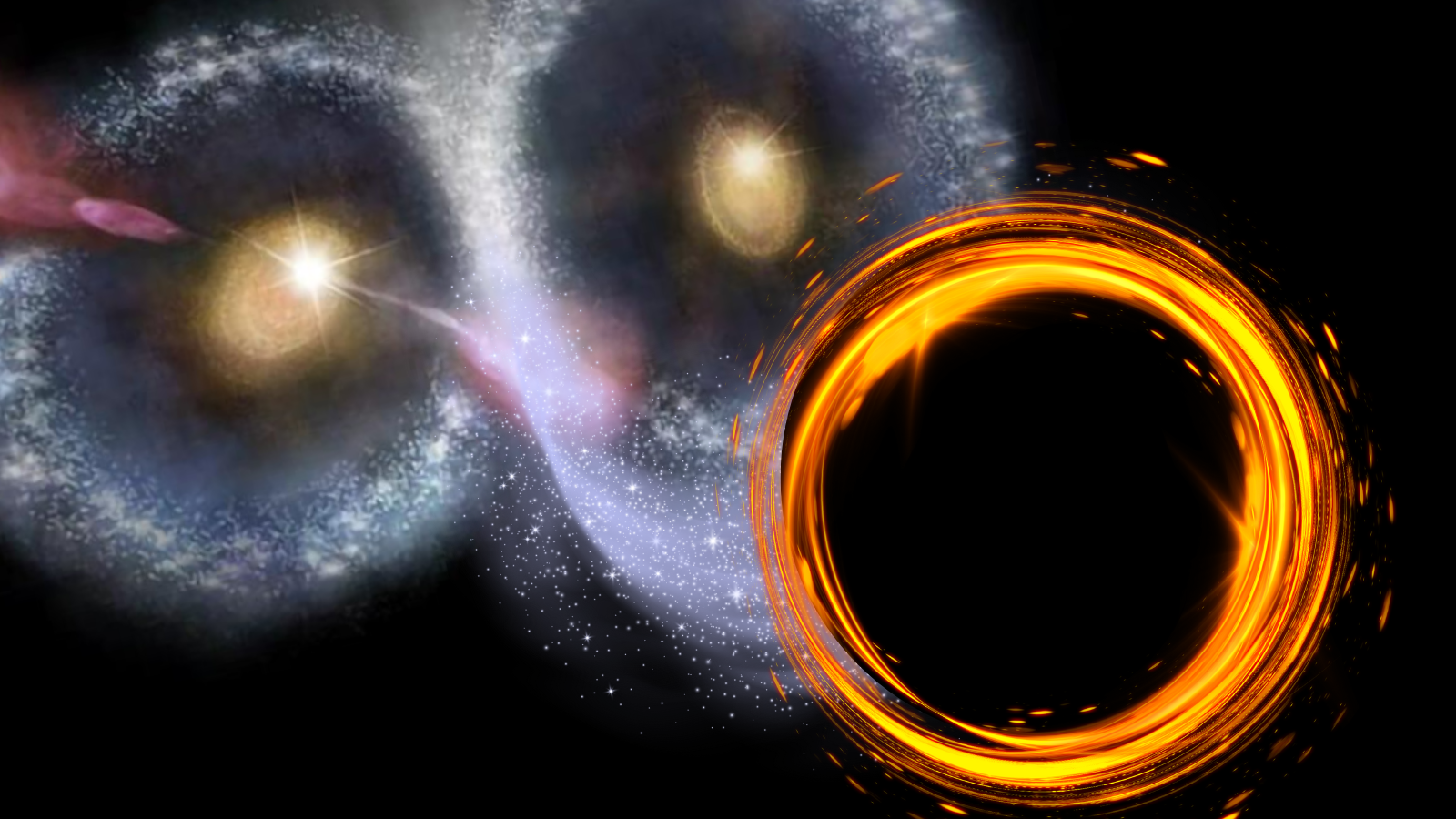Alien life on Mars or Europa could survive off cosmic rays instead of the sun, scientists suggest
Mars, Europa and Enceladus are the three most promising locations in the solar system to search for life living off cosmic rays.

Cosmic rays could be a vital source of energy for life on icy moons, on Mars, or even on rogue planets that wander alone between stars; it's possible, scientists say, that the phenomenon could create a "radiolytic habitable zone" on what are otherwise some of the coldest, darkest worlds known.
"For this mechanism to work, you just need a planetary surface with a thin or no atmosphere, irrespective of its distance from the sun," Dimitra Atri of New York University Abu Dhabi, told Space.com. "This would expand the possibilities of life existing on distant and rogue planets."
On Earth, life mostly derives its biochemical energy from sunlight. There are exceptions, however. For instance, life can exist on the seafloor where sunlight cannot shine through. There, hydrothermal vents pump heat and chemical energy into the ocean. Meanwhile, extremophile microbes living several kilometers down below Earth's rocky surface survive on a diet of hydrogen, methane, sulfur and ammonia and have very slow metabolisms.
These exceptions point to how life might persist on worlds unlike our own, on planets like Mars or in the oceans of icy moons such as Europa and Enceladus. And now, a team of researchers led by Atri has found a new way that life might gain energy to eke out an existence in the dark: cosmic rays.
What are cosmic rays?
Cosmic rays are energetic particles that originate beyond the solar system. Their precise origin is undetermined — supernova remnants and active galactic nuclei are considered to be two likely sources — but what we know is that cosmic rays are generally either charged particles such as electrons and protons, or atomic nuclei such as alpha particles (helium nuclei). Cosmic rays are also typically considered to be ionizing radiation, which can have a detrimental effect on biological cells and DNA.
Perhaps, though, cosmic rays aren't bad for all life. Indeed, as Atri says, in certain environments they could be essential.
Moving at close to the speed of light, cosmic rays are sufficiently energetic to be able to penetrate several feet into the ground if they reach a planetary body with no magnetic field to deflect them, and no thick atmosphere to absorb them. On Earth, we are relatively safe from cosmic rays because our planet does have a robust magnetic field (although, technically, frequent flyers are more exposed to them). Mars, however, has a thin atmosphere and no magnetic shield, while Jupiter's and Saturn's moons, barring the atmospheric Titan, are much more exposed to cosmic rays.
Breaking space news, the latest updates on rocket launches, skywatching events and more!
When a cosmic ray reaches the surface of a body and strikes water-ice, both on the surface and in the body's sub-surface, the sheer energy of impact can smash water molecules apart and release electrons in the process. These electrons can then be utilized by simple microbial life as an energy source in a process known as radiolysis.
Atri and his colleagues performed a series of calculations that worked out the maximum biomass that could survive from the flux of cosmic rays at Mars, Europa and Enceladus, and how deep that life would be.
The contenders
Enceladus, which is an icy moon of Saturn that is 313 miles (504 kilometers) across with an underground ocean and giant water plumes that spray out through surface cracks, was the most promising, with a maximum biomass sustainable by cosmic rays of 400 millionths of a gram per square centimeter. This might not sound like much, but consider that a single microbe has a mass in the region of a trillionth of a gram.
"Life might be able to survive in more places than we ever imagined."
Dimitra Atri of New York University Abu Dhabi
Mars was next, with a maximum biomass of 110 millionths of a gram per square centimeter capable of being supported by radiolysis. If life exists on Mars, it would be underground, embedded in permafrost and could potentially explain anomalous methane readings scientists see in Mars' atmosphere.
Third on the list was Jupiter's moon Europa, which is the quintessential ocean moon. Europa's ocean is deemed to exist below dozens of miles of ice, which is far too deep for cosmic rays to typically reach, and it exists inside Jupiter's huge magnetosphere that can protect Europa from some of the cosmic-ray barrage. And yet, Atri’s team calculated that cosmic rays could possibly support a biomass of up to 4.5 billionths of a gram per cubic centimeter at a depth of 3.3 feet (1 meter). How could this be possible if the ocean is far deeper?
"Although we know very little about the surface or near-surface environment, it is plausible that in the presence of salts, which are widely distributed throughout our solar system, water can stay in liquid form even at very low temperatures," Atri told Space.com. He imagines pockets of liquid water within touching distance of Europa’s surface, kept liquid by the salts that act as an antifreeze: "Microbes can live in shallow subsurface environments under such conditions in pockets where such brines exist."
Therefore, it raises the possibility that life on Europa could exist much closer to the surface than we previously thought, and forthcoming missions including NASA's Europa Clipper and the European Space Agency's Jupiter Icy Moons Explorer (JUICE), both currently on their way to Jupiter, might want to concentrate on areas where the icy crust on Europa is thin.
A new habitable zone?
Cosmic-ray interactions with ice don't just generate electrons for radiolysis. They can also spark chemical reactions that are only possible with the higher energies of cosmic rays as opposed to the lower-energy light from the sun. These reactions can then create complex organic molecules directly, producing new pathways by which life can utilize them for cellular and metabolic functions.
Astrobiologists frequently talk about the habitable zone, which is a region around the sun where temperatures are suitable for liquid water to exist on a world with an atmosphere. We already know that bodies such as Europa and Enceladus exist outside of the traditional boundaries of this zone and are kept warm enough for liquid water by Jupiter's gravitational field flexing their interior. Now, Atri's team introduces the "radiolytic habitable zone," which falls at a depth below a planet or moon's surface where life can be given energy through radiolysis.
Of course, radiolysis doesn't have to be the only source of energy on a moon or planet. There is speculation that icy moons including Europa and Enceladus possess hydrothermal vents on their seafloor belching chemical energy into their ocean, while on Mars sunlight could also be a factor and, long ago, volcanic energy.
"In fact, my next paper is focused on estimating the total energy availability from various sources, including radiolysis and hydrothermal vents," Atri told Space.com. The potential biomass on these worlds could be much larger than Atri's initial calculations based purely on radiolysis suggest.
The research even opens the door to microbial life on worlds farther afield, perhaps on Pluto in the Kuiper Belt, or even on rogue exoplanets wandering in the vastness of space far from any star, ejected long ago from their home systems. The density of cosmic rays is even greater in interstellar space, since the sun's magnetic bubble, the heliosphere, is able to block some of the cosmic-ray influx from reaching the planets of the solar system. A rogue planet, cast adrift from its protective star, could be exposed to a great deal of radiolytic action.
"This discovery changes the way we think about where life might exist," concluded Atri in a statement. "Life might be able to survive in more places than we ever imagined."
The findings are published in the International Journal of Astrobiology.

Keith Cooper is a freelance science journalist and editor in the United Kingdom, and has a degree in physics and astrophysics from the University of Manchester. He's the author of "The Contact Paradox: Challenging Our Assumptions in the Search for Extraterrestrial Intelligence" (Bloomsbury Sigma, 2020) and has written articles on astronomy, space, physics and astrobiology for a multitude of magazines and websites.
You must confirm your public display name before commenting
Please logout and then login again, you will then be prompted to enter your display name.


